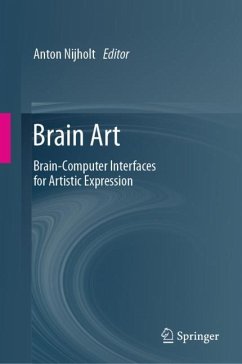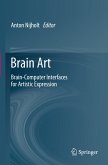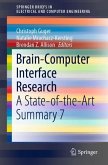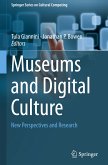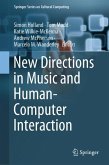This is the first book on brain-computer interfaces (BCI) that aims to explain how these BCI interfaces can be used for artistic goals. Devices that measure changes in brain activity in various regions of our brain are available and they make it possible to investigate how brain activity is related to experiencing and creating art. Brain activity can also be monitored in order to find out about the affective state of a performer or bystander and use this knowledge to create or adapt an interactive multi-sensorial (audio, visual, tactile) piece of art. Making use of the measured affective state is just one of the possible ways to use BCI for artistic expression.
We can also stimulate brain activity. It can be evoked externally by exposing our brain to external events, whether they are visual, auditory, or tactile. Knowing about the stimuli and the effect on the brain makes it possible to translate such external stimuli to decisions and commands that help to design, implement, or adapt an artistic performance, or interactive installation. Stimulating brain activity can also be done internally. Brain activity can be voluntarily manipulated and changes can be translated into computer commands to realize an artistic vision.
The chapters in this book have been written by researchers in human-computer interaction, brain-computer interaction, neuroscience, psychology and social sciences, often in cooperation with artists using BCI in their work. It is the perfect book for those seeking to learn about brain-computer interfaces used for artistic applications.
Hinweis: Dieser Artikel kann nur an eine deutsche Lieferadresse ausgeliefert werden.
We can also stimulate brain activity. It can be evoked externally by exposing our brain to external events, whether they are visual, auditory, or tactile. Knowing about the stimuli and the effect on the brain makes it possible to translate such external stimuli to decisions and commands that help to design, implement, or adapt an artistic performance, or interactive installation. Stimulating brain activity can also be done internally. Brain activity can be voluntarily manipulated and changes can be translated into computer commands to realize an artistic vision.
The chapters in this book have been written by researchers in human-computer interaction, brain-computer interaction, neuroscience, psychology and social sciences, often in cooperation with artists using BCI in their work. It is the perfect book for those seeking to learn about brain-computer interfaces used for artistic applications.
Hinweis: Dieser Artikel kann nur an eine deutsche Lieferadresse ausgeliefert werden.
"For the first time, readers can learn about the enormous scope of BCI experimentation in art and art-related projects, dating back many decades, all in one volume. Importantly, this book is not only for people with an interest in the arts, but is also of high importance to the wider BCI scientific and engineering community." (Doron Friedman, Brain Computer Interfaces, April 24, 2020)
"It provides a comprehensive picture of aesthetic concerns and technological advances that have shaped interaction with brain-computer interfaces (BCI). The edited volume also includes thorough documentation of recent artworks, experiments, and therapies based on neurofeedback. It can constitute an essential resource for historians and media theorists examining the development of this genre. ... Nijholt's book aptly extends the scope of aesthetic expression beyond the realm of fine art and music." (Cristina Albu, Leonardo, October, 2019)
"It provides a comprehensive picture of aesthetic concerns and technological advances that have shaped interaction with brain-computer interfaces (BCI). The edited volume also includes thorough documentation of recent artworks, experiments, and therapies based on neurofeedback. It can constitute an essential resource for historians and media theorists examining the development of this genre. ... Nijholt's book aptly extends the scope of aesthetic expression beyond the realm of fine art and music." (Cristina Albu, Leonardo, October, 2019)

